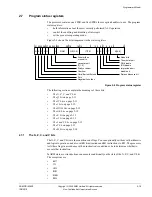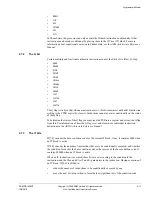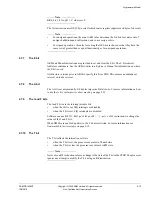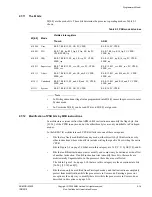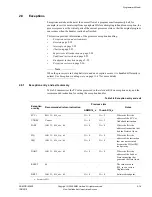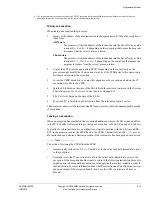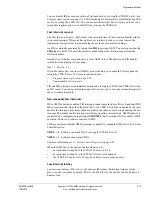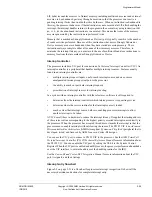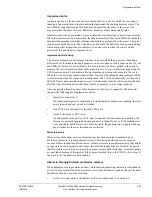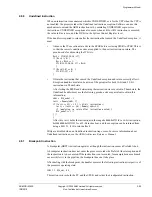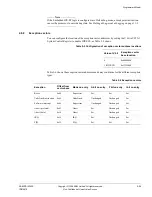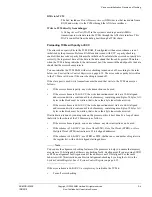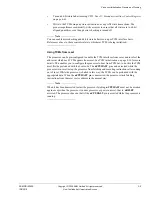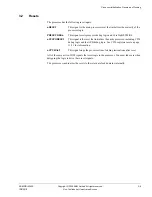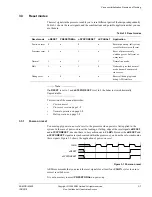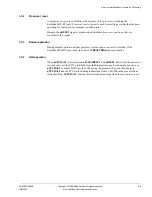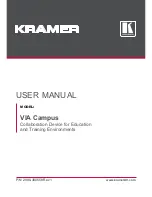
Programmer’s Model
ARM DDI 0363E
Copyright © 2009 ARM Limited. All rights reserved.
2-22
ID013010
Non-Confidential, Unrestricted Access
2.8.4
Aborts
When the processor's memory system cannot complete a memory access successfully, an abort
is generated. Aborts can occur for a number of reasons, for example:
•
a permission fault indicated by the MPU
•
an error response to a transaction on the AXI memory bus
•
an error detected in the data by the ECC checking logic.
An error occurring on an instruction fetch generates a
prefetch abort
. Errors occurring on data
accesses generate
data aborts
. Aborts are also categorized as being either
precise
or
imprecise
.
When a prefetch or data abort occurs, the processor takes the appropriate type of exception. See
Exception entry and exit summary
on page 2-16 for more information. Additional information
about the type of abort is stored in registers, and signaled as events. See
Fault handling
on
page 8-7 for more details of the types of fault that can cause an abort and the information that
the processor provides about these faults.
Prefetch aborts
When a
Prefetch Abort
(PABT) occurs, the processor marks the prefetched instruction as
invalid, but does not take the exception until the instruction is to be executed. If the instruction
is not executed, for example because a branch occurs while it is in the pipeline, the abort does
not take place.
All prefetch aborts are precise.
Data aborts
An error occurring on a data memory access can generate a data abort. If the instruction
generating the memory access is not executed, for example, because it fails its condition codes,
or is interrupted, the data abort does not take place.
A
Data Abort
(DABT) can be either precise or imprecise, depending on the type of fault that
caused it.
The processor implements the
base restored Data Abort model
, as opposed to a
base updated
Data Abort model
.
With the
base restored Data Abort model
, when a Data Abort exception occurs during the
execution of a memory access instruction, the processor hardware always restores the base
register to the value it contained before the instruction was executed. This removes the
requirement for the Data Abort handler to unwind any base register update that the aborted
instruction might have specified. This simplifies the software Data Abort handler. For more
information, see the
ARM Architecture Reference Manual
.
Precise aborts
A precise abort, also known as a synchronous abort, is one for which the exception is guaranteed
to be taken on the instruction that generated the aborting memory access. The abort handler can
use the value in the Link Register (r14_abt) to determine which instruction generated the abort,
and the value in the Saved Program Status Register (SPSR_abt) to determine the state of the
processor when the abort occurred.



